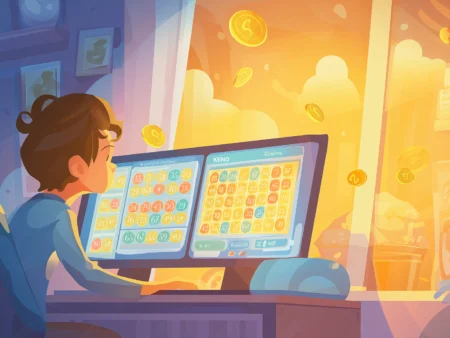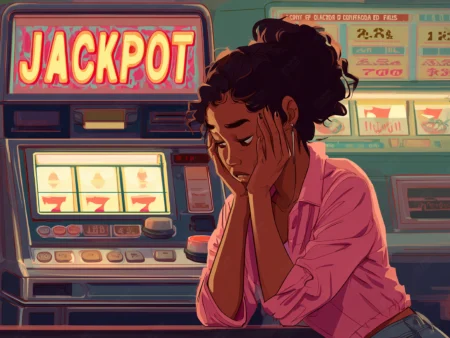Some slots pay regularly but with small wins. Others pay out significantly larger sums, epic wins even, but do so rarely. Why? It’s all down to volatility and RTP. Don’t worry if you don’t understand these concepts. In this Go Spin blog, we’ll explain how each affects your gameplay and how understanding them can factor into your gameplay, helping you identify the correct bankroll for specific games. Ultimately, this is a guide on slot RTP vs volatility, and by the end of it, you’ll be in a considerably better place to wager on games, boosting your chances of winning.

What Is Slot RTP?
RTP stands for Return to Player Percentage, representing the expected rewards a player can win from online slots. It’s an average calculated over an infinite number of games, though in reality, playing an infinite number of games isn’t possible.
It’s an easier concept to grasp. If you know anything about house edges, you’re already halfway there. Here’s what you need to know:
Definition of RTP (Return to Player)
Return to Player (RTP) refers to the percentage of total wagers a game returns to players over time, indicating potential winnings.
RTP (%) represents the expected percentage of bets a casino game will pay back to players in the long run, calculated over a significant number of plays. It is the total percentage of funds wagered on a slot that casinos redistribute to players over time. In short, the RTP rate represents the bit that’s up for grabs, while the house edge is what the casino keeps as profit.
How RTP Is Calculated
To explain how it works, let’s give you an example. 95% is the industry standard RTP rate. In a slot with an RTP rate of 95%, this means $0.95 of each bet is paid out to all players over time, while the remaining $0.05 goes into the casino’s pocket. This doesn’t mean that you’ll win $0.95 with every bet made. It simply means that with each bet, $0.95 is added to a theoretical pot (consisting of all bets by every player) for you to win over all time.
Why RTP Matters to Players
RTP matters because the higher the RTP rate, the greater the potential return in the long term. When you choose slots with high RTP rates, you’re effectively putting yourself in a better position to win more. You should obviously avoid low RTP slots, as these represent games where the casino takes a larger cut of each bet.
Best Slots with High RTP (2025 Updated List)
While the industry standard RTP rate is 95%, we only recommend playing games with RTPs of 96% or higher. However, there are high RTP slots that go way beyond those limits. NetEnt’s Blood Suckers has an RTP of 98%, while Mega Joker and Book of 99 (as its name suggests) have RTPs of 99%.
What Is Slot Volatility?
Next, we’ll look at slot volatility. To better understand the types of games you’re playing, you’ll want slot variance explained, so let’s get on with it.
Definition of Volatility (Variance) in Slots
Slot volatility (also known as variance or risk) reveals two things – how frequently a slot pays and what sort of wins it delivers – highly valuable ones, or smaller-scale prizes, all in relation to your bet.
Types of Slot Volatility
You’ll typically find three types of slot variances in games:
- Low Volatility Slots: These slots pay frequently, but as a result, you’ll land smaller value wins. Starburst is a fine example of the best low-volatility slots for big wins.
- Medium Volatility Slots: Medium variance games are exactly as you might expect. They offer balanced gameplay with moderate wins. Think Gonzo’s Quest, and you’ll have an idea of what we mean.
- High Volatility Slots: These games pay out the biggest prizes. However, to offset that, they do so rather infrequently. Examples of these types of games include Dead or Alive 2, Big Bass Bonanza, and almost every Megaways game you’ll come across online.
How to Choose the Right Volatility Level for Your Playstyle
To take advantage of volatility and increase your chances of success, you need to pick the right volatility for your budget and playstyle. Highly volatile games will see you endure lengthy losing streaks, so you need an appropriately large bankroll to sustain those losses until you win. By contrast, those with a small bankroll should opt for low-variance games, as the regular small-value wins will help keep your balance healthy. Aside from budget considerations, you should also consider risk tolerance. Those after casual fun will choose low-volatile games, while if chasing jackpots is something that interests you, highly volatile games should suffice.
RTP vs Volatility: Key Differences & How They Work Together
You can compare RTP and volatility. Many players are unaware that they can work hand in hand, and if you want to play slots strategically, you must compare what’s on offer.
Comparing RTP & Volatility Side-by-Side
Should you choose high RTP or low variance games? Why not both? There is no requirement to pick games based solely on RTP or variance. As mentioned, RTP tells you how much a game pays back over an infinite number of spins, while volatility reveals what sorts of wins are up for grabs and how frequently you’ll land them. Always choose slots with high RTPs, but the volatility is down to your personal preference, bankroll and playstyle.
Can a Slot Have High RTP & High Volatility?
Highly volatile slots typically offer industry-standard RTPs or around 95% to 96%. Because high-variance games offer immense prizes, it’s rare to find high RTP and highly volatile slots. Highly volatile slots offer highly unpredictable payouts, which doesn’t work with RTP rates north of 96%.
Understanding RTP & Volatility in Bonus Rounds
Whenever you see an RTP rate or volatility level in a slot, it normally refers to the base game. Bonus rounds may have their own RTP rates and volatility levels. Moreover, some slots allow you to change the volatility level, and purchasing bonus rounds can affect both. With that in mind, we recommend checking paytables and reviews for any games with these features. This way, you’ll understand how RTP and volatility change across bonus mechanics before you start betting.
How to Use RTP & Volatility to Make Smarter Bets
It is possible to use RTP and volatility to make smarter bets online and improve your chances of success. Allow Go Spin to explain how this works next.
Choosing the Best Slot for Your Goal
If you want steady wins, then pick a slot with a high RTP rate (96% or higher) and low variance. If chasing jackpots tickles your fancy, then highly volatile games are the answer, but you’ll need a big bankroll to sustain gameplay through losing streaks.
Betting Strategies for Different Slot Types
You should know that it’s possible to use different strategies based on your preferred slot. Low-volatile games work best over the long term. You can enjoy lengthy sessions by winning regularly and keeping your balance healthy. Highly volatile slot strategies will see you need a big balance to sustain losses, but the higher risk factor will result in bigger wins when they land. Don’t mix up the strategies by heading to highly volatile games with a small bankroll.
Managing Bankroll Based on RTP & Volatility
As you can see above, managing your bankroll is easier to do if you understand the RTP and volatility of your preferred game. That said, there are other ways to manage your bankroll, too, including setting loss limits and goals for winnings. These can (and should) vary based on your game’s RTP and volatility levels. We recommend adjusting as necessary before playing.
Common Myths & Misconceptions About RTP & Volatility
We want to ensure that you won’t fall victim to some of the many myths and misconceptions about RTP and volatility. For instance, have you heard of hot and cold slots and streaks?
Hot and cold streaks don’t exist. Hot streaks don’t ensure slots pay, and cold streaks don’t mean they are due to cough up the goods. Fair slots use random number generator algorithms, so there’s no such thing as streaks. Don’t fall for that.
Another major myth is that the higher the RTP of a game is, the more it pays out. That’s not true, not over a single spin. It pays out a larger proportion of the total amount players bet but over the long term. Another myth surrounds low-variance titles.
Low-volatility internet slots aren’t uniquely reserved for newbies. Equally, high-variance titles aren’t just for the pros. Either works well for beginners or gambling veterans. Everything is reliant on your bankroll and appetite for risk.
Now, let’s touch on RTP manipulation in titles. While some casinos can manipulate RTP in games, that’s only if the software provider behind the games allows it. None of the reputable developers permit this. Moreover, licensed slots are RNG-certified by independent third-party auditors for fairness. They check RTP rates to ensure they are fair, so this is another myth we can disprove.
Final Thoughts
Now that you know the differences between RTP and volatility, you can put your newfound experience to good use. Choosing the right slot is the first step to landing wins, and it’s all about balancing potential payouts with risk. We recommend playing free slot demos to experiment with different setups. When you’re ready to play for real money, don’t hesitate to choose high-RTP slots at one of Go Spin’s trusted online casinos.
FAQ
What is better? High or low volatility?
One isn’t better than the other. That depends on your playstyle. Low-variance games are suitable for smaller bankrolls, while highly volatile games work better with larger budgets.
Can you predict when an internet slot will pay out based on volatility?
Yes and no. You can predict whether a slot pays out regularly or infrequently (in general), but you can’t know exactly when it will do so.
Do progressive jackpot slots have low RTP?
Some do. The biggest paying progressive jackpots have RTP rates that go no higher than the industry standard, but exceptions exist. It isn’t an iron-clad rule or anything.
How do I find the RTP and volatility of a slot?
Most slots have a paytable that reveals this information. Alternatively, you can read slot reviews to learn everything you need to know.
What’s the best slot for casual players?
Casual players should aim for low to medium-variance slots, ideally with an RTP of 96% or higher. These lead to longer, fun sessions with steady payouts that will keep you in the game.












































